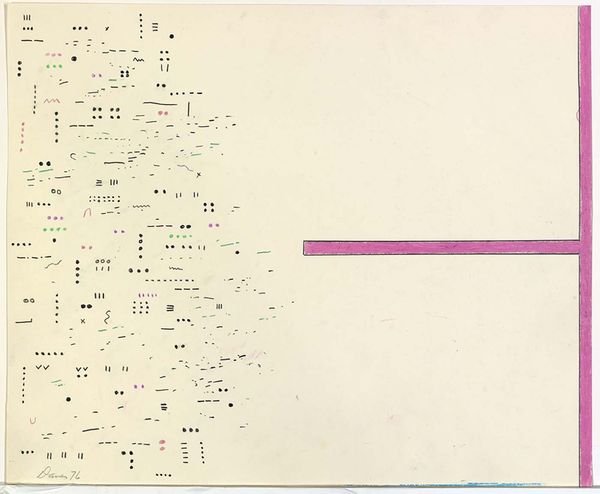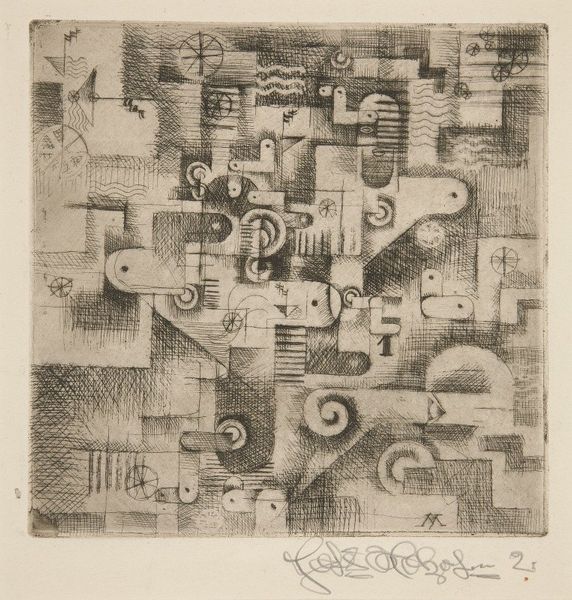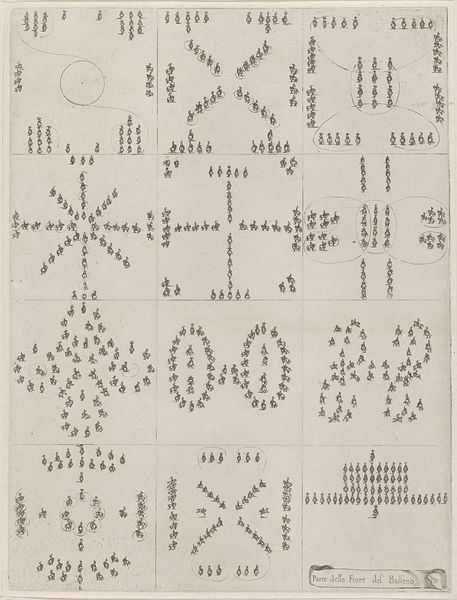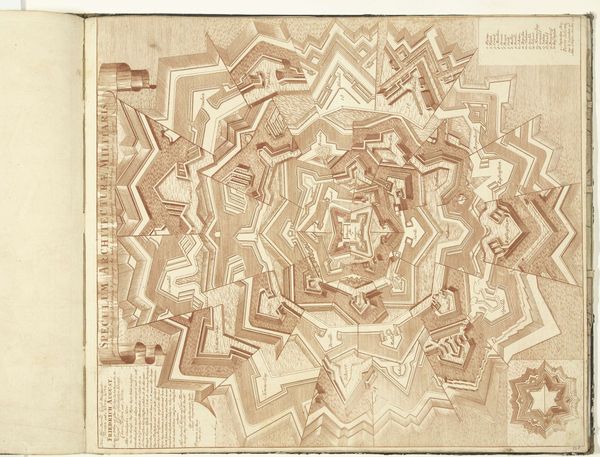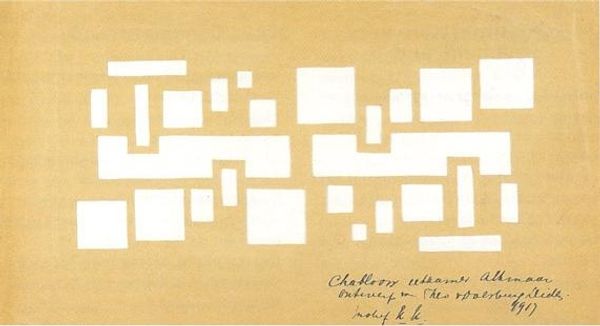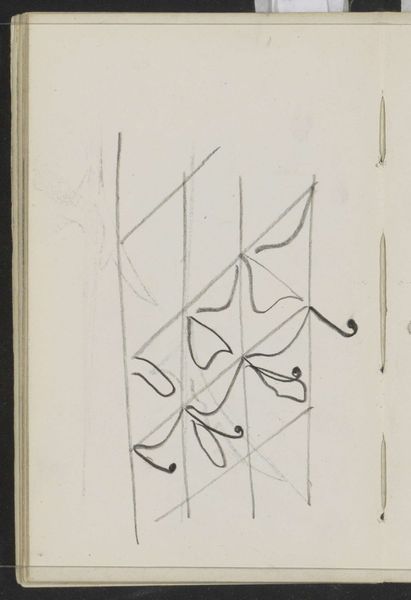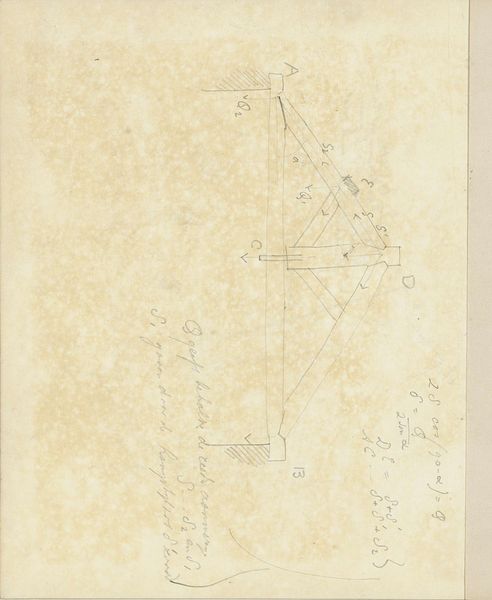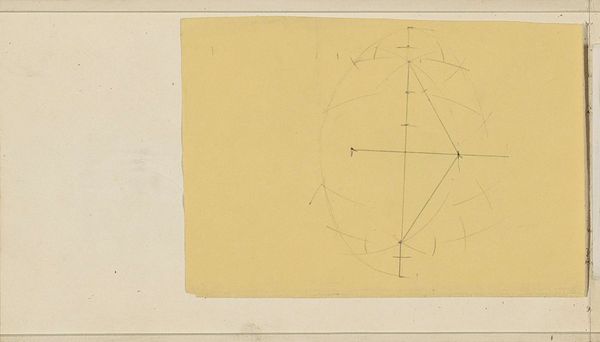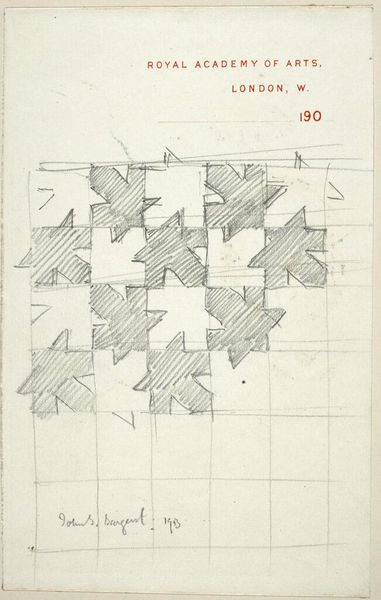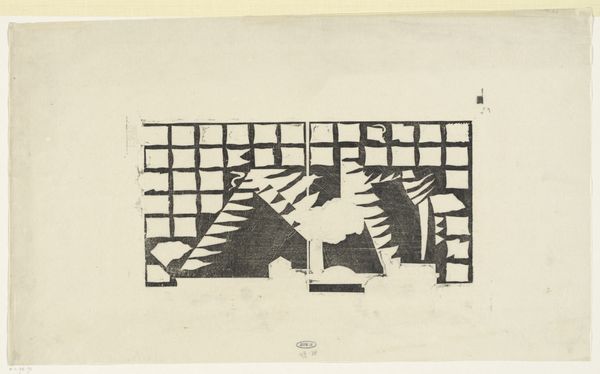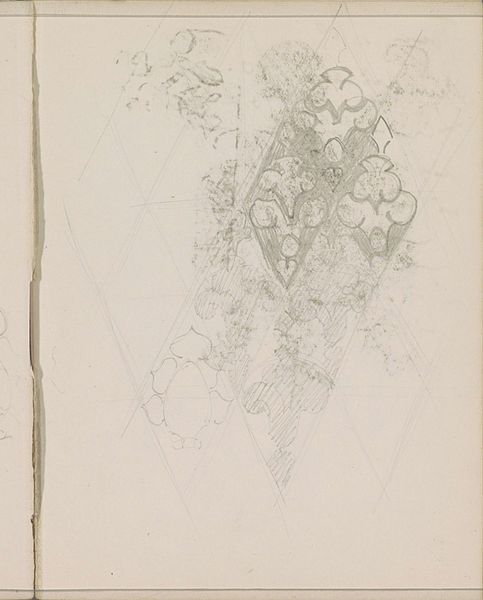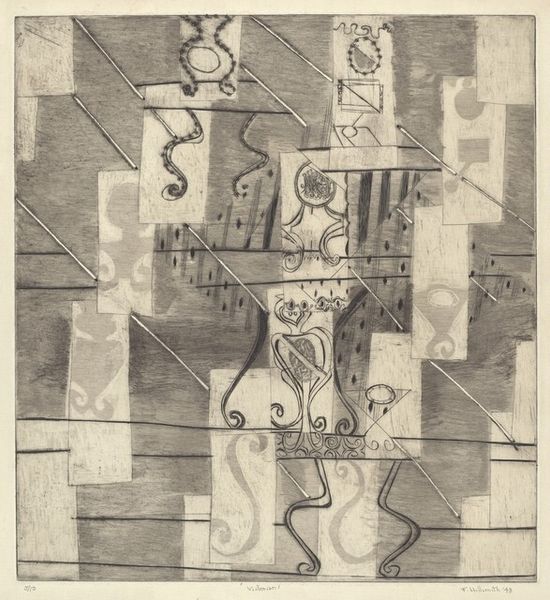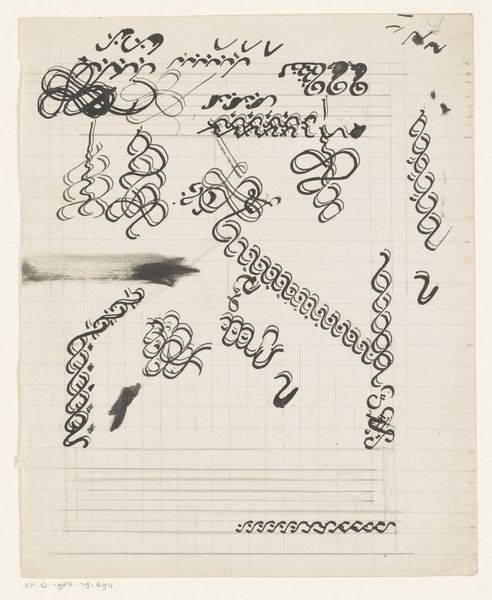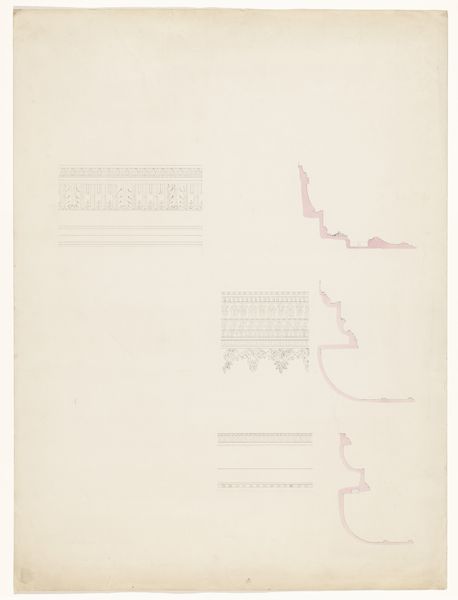
Dimensions: image: 418 x 531 mm
Copyright: © Estate of Ian Hamilton Finlay | CC-BY-NC-ND 4.0 DEED, Photo: Tate
Curator: Looking at Ian Hamilton Finlay's "Luftwaffe - After Mondrian" is always such a disquieting experience. It feels both familiar and deeply unsettling. Editor: It's a sketch, almost airy, but the sheer number of crosses… they swarm the page like a bad dream. Are they supposed to be Iron Crosses, as in, from Nazi Germany? Curator: Finlay appropriates Mondrian's geometric abstraction, but replaces the rectangles with the Iron Cross, the symbol of the German Luftwaffe. The title makes the connection explicit. It's a loaded juxtaposition. Editor: Right, playing with the cold, ordered beauty of abstraction to hint at something terrible. So much conceptual art hides behind cleverness, but this really resonates. Curator: Finlay was always interested in the darker aspects of classical ideals, the way beauty can be twisted, and the horrors inflicted in the name of order. It makes you wonder about the hidden potential for violence within seemingly rational systems. Editor: It's a stark reminder that even the most pure-seeming forms can be co-opted and corrupted. I'll never look at a Mondrian in quite the same way again. Curator: Well, there’s always a shadow side, isn’t there? Finlay just makes it visible.
Comments
tate 7 months ago
⋮
http://www.tate.org.uk/art/artworks/hamilton-finlay-luftwaffe-after-mondrian-p11940
Join the conversation
Join millions of artists and users on Artera today and experience the ultimate creative platform.
tate 7 months ago
⋮
Finlay makes a visual pun between the black cross insignia of the Luftwaffe, the German air force during the Second World War, and the abstract paintings of the Dutch artist Piet Mondrian. In particular, this drawing is based on a series of works by Mondrian from 1914–15, entitled Jetty and Ocean. For Mondrian the balance of horizontal and vertical symbolised a mystical harmony. An opponent of the Nazis, Mondrian’s work was condemned as ‘degenerate’. As Germany threatened Europe, he realised that his life was in danger and fled to London and later New York. Gallery label, July 2008
